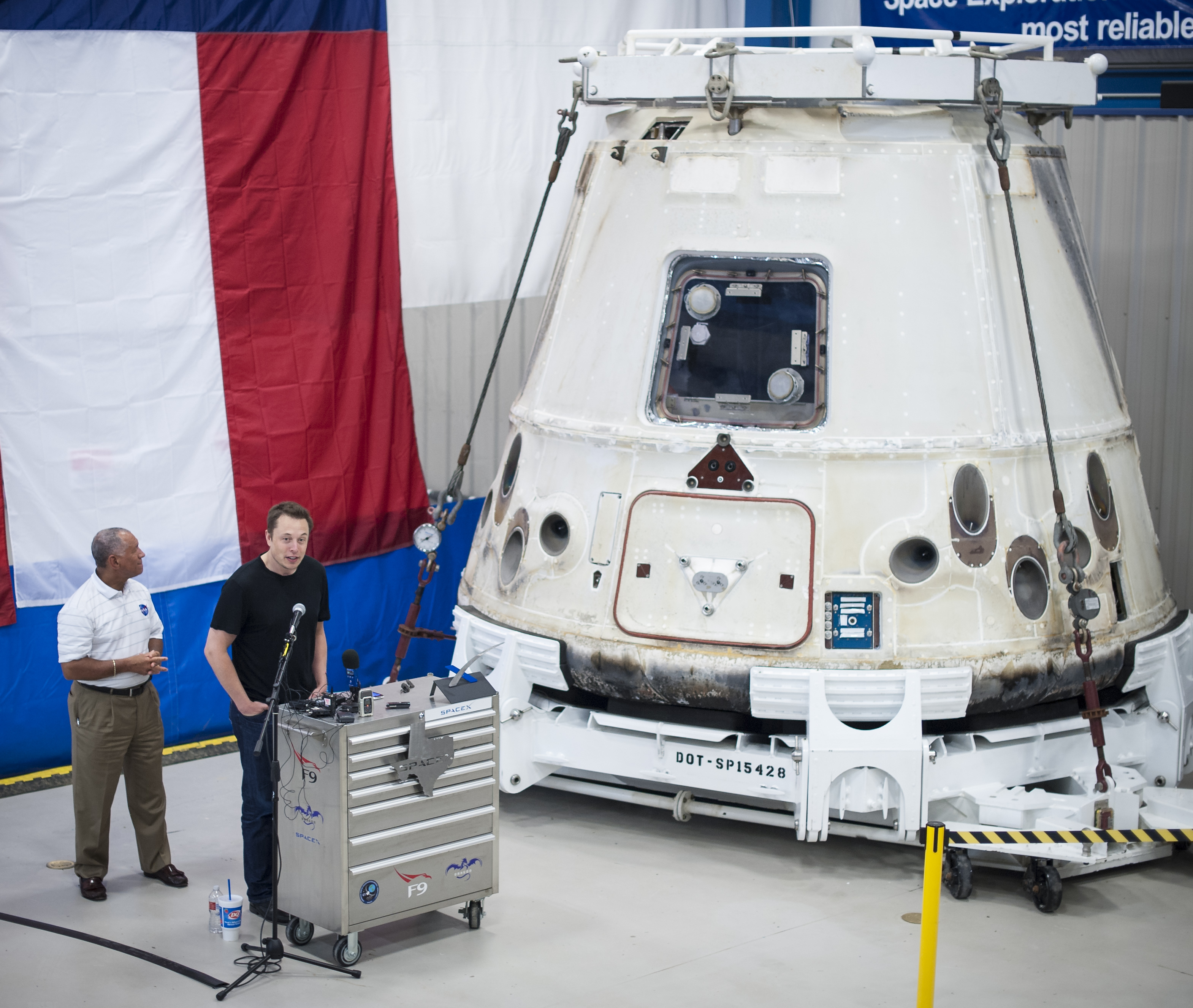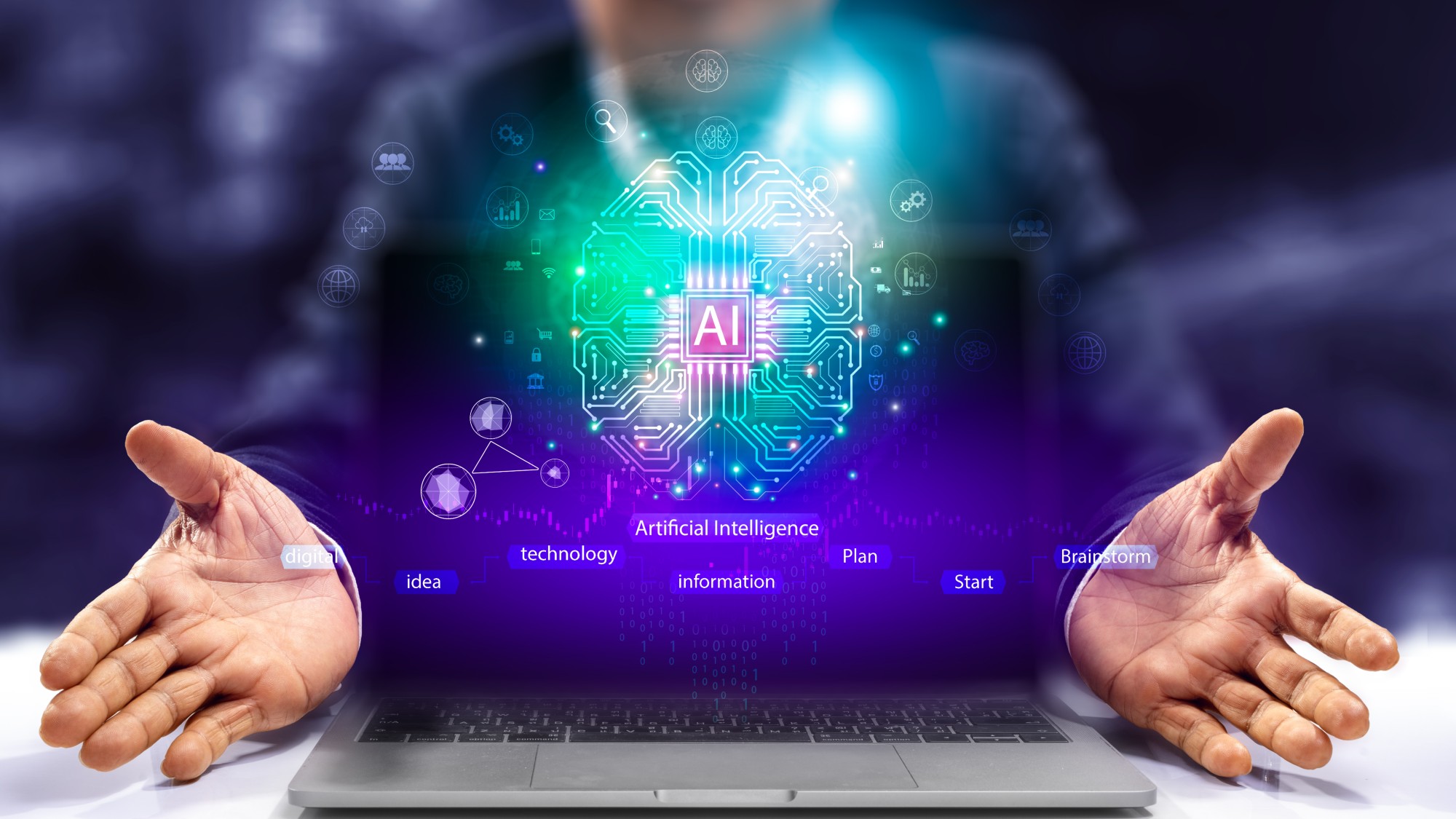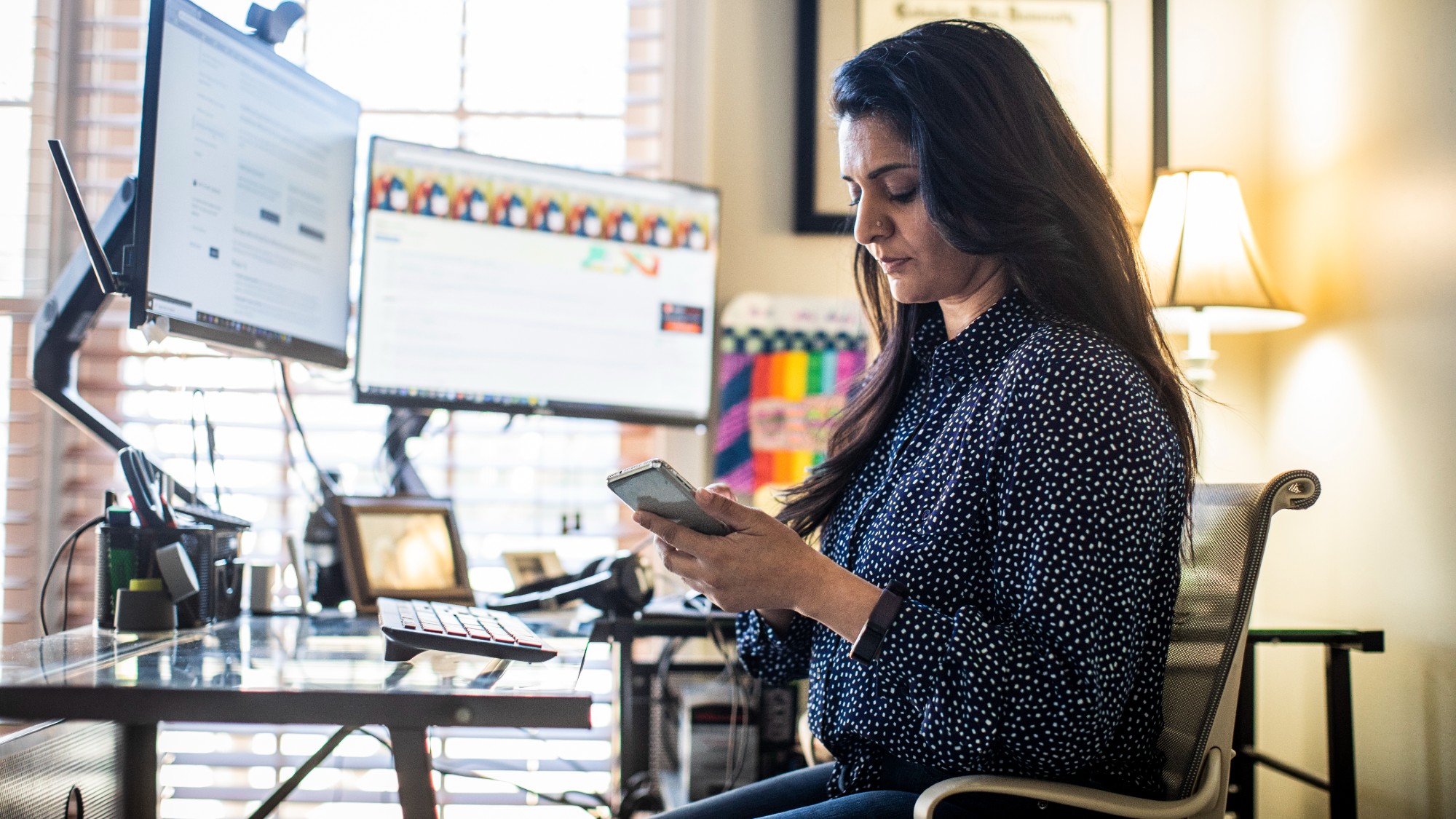Best technology investments for 2015
Each year sees new and potentially life-changing technological advances – many of which are ripe for investment

Investment 1: The dawn of a new space age
By the time man landed on the Moon in 1969, those at home on Earth were already growing bored of the whole idea – dreams of manned flights to Mars and alien contact were replaced by the more mundane realities of the sheer scale of space and the engineering challenges to be overcome. But with Silicon Valley entrepreneurs looking to the stars, those dreams may be edging closer to reality. Take commercial space travel. SpaceX, run by Elon Musk, founder of electric car giant Tesla, became the first private company to successfully carry out a mission to the International Space Station in 2012. Several consortia, including Virgin Galactic, XCOR Aerospace and EADS Astrium, have turned their attention to suborbital flight. There’s even talk of mining asteroids for rare minerals.
Then there’s the satellite business – a far more established space industry. Nearly 30 countries, including Nigeria and Kazakhstan, now spend more than $100m a year on official space programmes, according to satellite industry think tank Euroconsult. The satellite business is worth nearly $200bn a year, and is still growing at a double-digit rate. This can be very valuable for emerging economies – last year, for example, India’s authorities were able to save thousands of lives by tracking a cyclone’s path, and ordering a mass evacuation. The fast-growing Inmarsat (LSE: ISAT) provides satellite phone services in areas without a mobile or broadband network. While its shares trade at a pricey 25 times earnings, its revenue is growing quickly and the shares yield around 4%.
The Week
Escape your echo chamber. Get the facts behind the news, plus analysis from multiple perspectives.

Sign up for The Week's Free Newsletters
From our morning news briefing to a weekly Good News Newsletter, get the best of The Week delivered directly to your inbox.
From our morning news briefing to a weekly Good News Newsletter, get the best of The Week delivered directly to your inbox.
Investment 2: Remote-control medicine
Wireless technology has changed the way we work, shop and interact with people – and it is increasingly changing healthcare too. For example, a company called Medtronic has produced a pacemaker so small that it can be inserted directly into the heart using a catheter, eliminating the need for major surgery or for the leads used by traditional pacemakers.
Wireless technology is also enabling the creation of devices that can monitor the body and then adjust their performance, with minimal human input. For example, researchers at Boston University and Massachusetts General Hospital have created an artificial pancreas that uses sensors to check blood-sugar levels. This data is then relayed to a miniature pump below a patient’s skin, which automatically adds insulin to the body. This has slashed the number of medical problems caused by over- or under-dosing. The patients themselves are able to check their blood sugar levels and the pump’s operation on their smartphone.
On a purely practical level, monitoring the vital signs of vulnerable patients becomes much easier when you eliminate the need for cables. Patients have more freedom of movement and staff can be alerted remotely when problems arise. Electronics conglomerate Philips (NYSE: PHG) is one company that has been developing remote healthcare monitoring products. It currently yields around 3.5% and trades at around 25 times 2015 earnings.
A free daily email with the biggest news stories of the day – and the best features from TheWeek.com
Investment 3: Feeding the world from smart farms
Our ability to keep feeding a growing global population has been a major worry for hundreds of years. With developing economies growing richer and hungrier by the day – China recently became a net importer of rice for the first time in 50 years – this is a trend that is not going to go away. But technology should help us to meet this demand. For example, ‘precision farming’ uses satellite technology and soil sampling to calculate the best planting and harvesting patterns for very small areas of land. And IBM has developed ‘Deep Thunder’ – software that can provide accurate three-day forecasts for areas as small as one square kilometre.
And as urbanisation reduces the land available for agriculture, companies are working on ‘vertical farming’ in urban warehouses. Moving food production into an enclosed environment makes it easier to control every variable (such as light and temperature) to maximise growth and also permits growing all year around. This greatly increases crop yields in a fixed amount of space. Meanwhile, the automation of traditional farming continues apace. From self-driving tractors, to drone cropsprayers, to robot milkmaids, autonomous farming systems are helping to make farms more efficient and thus boost yields. Leading farm equipment producer Deere & company (NYSE: DE) is developing several such systems, and trades at nine times earnings with a yield of 2.4%.
Investment 4: Defending against the cyberwarriors
Revelations about online snooping by American intelligence agencies has led to a growing debate about the conflict between national security and people’s privacy. However, there are plenty of others out there who couldn’t give a hoot about the debate over privacy, and just want to steal as much data as possible, by fair means or foul. From the militaries of rival countries, to terrorist groups, to plain old cybercriminals, our data – and even national infrastructure – is increasingly vulnerable to being stolen or attacked over the internet.
In fact, the Center for Strategic and International Studies think tank (in conjunction with security firm McAfee) reckons that cybercrime costs the US up to $120bn a year (just under 1% of GDP), and reduces employment by around 500,000. Globally this could add up to $500bn. As a result, Bank of America Merrill Lynch reckons the market for cyber security products will nearly double, from $63.7bn in 2011 to $120.1bn, by 2017. There is plenty of room for growth – most firms devote less than 4% of their IT budgets to protection. Check Point Software (NASDAQ: CHKP) sells both software and hardware related to internet security, and develops firewalls. It trades at a pricey 21 times current earnings, but is growing rapidly.
Investment 5: Generating your own power
Imagine a future with no more electricity bills – where all of your energy is generated at home, and stored on tap for whenever you need it. It’s already reality for some – as many as 750,000 families in the US are now off-grid, with many using solar power to meet at least part of their needs. However, one big barrier to further growth is the problem of storing the energy generated when the sun shines or the wind blows, so that it can be used later in the day.
Researchers are taking two main approaches. One is to develop cheap large-scale batteries for utility companies, making it possible to store energy generated by solar and wind power for use in peak demand periods. The most promising technology here is ‘flow’ batteries – without getting too technical, these effectively store the electrical charge in liquid chemical form. Because the liquid is stored in tanks outside the core of the battery, it’s relatively easy to scale up the size. The Japanese – who are promoting solar power aggressively through targeted subsidies and government-funded research – are experimenting with ever-bigger flow batteries.
The other option is to make small, efficient batteries for residential use. Here the main area of interest is lithium-ion batteries, already used extensively in consumer goods such as laptops. They are lighter than conventional batteries, hold their charge longer, and can be recharged repeatedly. Tesla is building a ‘gigafactory’, which will produce lithium- ion batteries on a huge scale, slashing the cost. Johnson Controls (NYSE: JCI), which currently trades at a relatively modest 12.6 times 2015 earnings, is also trying to develop cheaper lithium-ion batteries.
Investment 6: Safer roads and connected cars
Road safety has improved a great deal in the last few decades – but if the cars of the future fulfil their promise, accidents could be virtually eliminated. We’re talking about a world of ‘connected cars’, that communicate with one another and the road network itself, adjusting driving automatically to the weather conditions and to other vehicles. And that world is closer than you think.
In 1995, Mitsubishi began to introduce an early form of adaptive cruise control (ACC) – while the car’s cruise control was activated, a laser sensor could detect a car in front and slow your vehicle appropriately. Since then, manufacturers have added features such as infrared and night-vision cameras. And in 2012 the European Commission-backed ‘Safe Road Trains for the Environment’ project (SARTRE) used communication between cars to create ‘trains’ of vehicles, where the lead car was driven by a human, but the others followed it without any human input.
Meanwhile, Continental AG (Dax: CON) and IBM are partnering to develop the ‘Connected eHorizon’. This involves building what is in effect, a giant digital net thrown over the road network, enabling all sensors within the net to talk to one another.As Continental AG says, map data will be improved “through crowdsourcing” – getting data from the cars themselves via their sensors. The goal is for it to ultimately enable “the vehicle to ‘look around the corner’, predicting road conditions ahead”. Continental AG trades at 11.5 times 2015 earnings.
-
 How to financially prepare for divorce
How to financially prepare for divorceThe Explainer Facing ‘irreconcilable differences’ does not have to be financially devastating
-
 Why it’s important to shop around for a mortgage and what to look for
Why it’s important to shop around for a mortgage and what to look forThe Explainer You can save big by comparing different mortgage offers
-
 4 ways to save on rising health care costs
4 ways to save on rising health care costsThe Explainer Health care expenses are part of an overall increase in the cost of living for Americans
-
 Received a windfall? Here is what to do next.
Received a windfall? Here is what to do next.The Explainer Avoid falling prey to ‘Sudden Wealth Syndrome’
-
 How to invest in the artificial intelligence boom
How to invest in the artificial intelligence boomThe Explainer Artificial intelligence is the biggest trend in technology, but there are fears that companies are overvalued
-
 What’s the difference between a bull market and bear market?
What’s the difference between a bull market and bear market?The Explainer How to tell if the market is soaring or slumping.
-
 Is it a good investment to buy a house?
Is it a good investment to buy a house?The Explainer Less young people are buying homes, opting to rent and invest in the stock market instead
-
 What is day trading and how risky is it?
What is day trading and how risky is it?the explainer It may be exciting, but the odds are long and the risks high
-
 What to know about investing in ETFs
What to know about investing in ETFsThe Explainer Exchange-traded funds can be a great choice for beginners
-
 Retail investors drive a flurry of IPOs
Retail investors drive a flurry of IPOsFeature After years of slowness, companies like Klarna and Gemini are reviving the IPO market
-
 Is hands-off investing the way to go?
Is hands-off investing the way to go?The Explainer In many cases, your money might be better off left alone